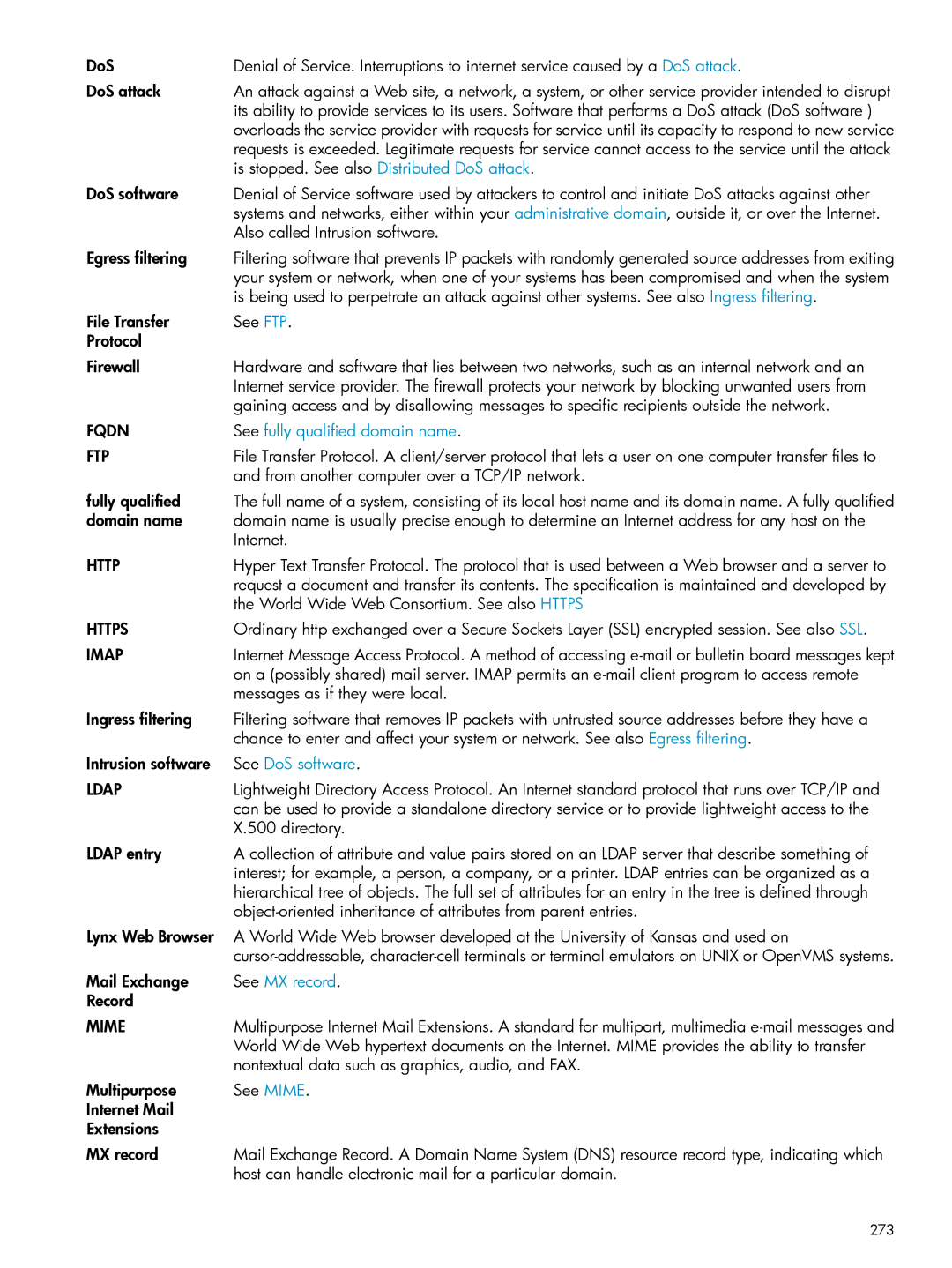DoS | Denial of Service. Interruptions to internet service caused by a DoS attack. |
DoS attack | An attack against a Web site, a network, a system, or other service provider intended to disrupt |
| its ability to provide services to its users. Software that performs a DoS attack (DoS software ) |
| overloads the service provider with requests for service until its capacity to respond to new service |
| requests is exceeded. Legitimate requests for service cannot access to the service until the attack |
| is stopped. See also Distributed DoS attack. |
DoS software | Denial of Service software used by attackers to control and initiate DoS attacks against other |
| systems and networks, either within your administrative domain, outside it, or over the Internet. |
| Also called Intrusion software. |
Egress filtering | Filtering software that prevents IP packets with randomly generated source addresses from exiting |
| your system or network, when one of your systems has been compromised and when the system |
| is being used to perpetrate an attack against other systems. See also Ingress filtering. |
File Transfer | See FTP. |
Protocol |
|
Firewall | Hardware and software that lies between two networks, such as an internal network and an |
| Internet service provider. The firewall protects your network by blocking unwanted users from |
| gaining access and by disallowing messages to specific recipients outside the network. |
FQDN | See fully qualified domain name. |
FTP | File Transfer Protocol. A client/server protocol that lets a user on one computer transfer files to |
| and from another computer over a TCP/IP network. |
fully qualified | The full name of a system, consisting of its local host name and its domain name. A fully qualified |
domain name | domain name is usually precise enough to determine an Internet address for any host on the |
| Internet. |
HTTP | Hyper Text Transfer Protocol. The protocol that is used between a Web browser and a server to |
| request a document and transfer its contents. The specification is maintained and developed by |
| the World Wide Web Consortium. See also HTTPS |
HTTPS | Ordinary http exchanged over a Secure Sockets Layer (SSL) encrypted session. See also SSL. |
IMAP | Internet Message Access Protocol. A method of accessing |
| on a (possibly shared) mail server. IMAP permits an |
| messages as if they were local. |
Ingress filtering | Filtering software that removes IP packets with untrusted source addresses before they have a |
| chance to enter and affect your system or network. See also Egress filtering. |
Intrusion software | See DoS software. |
LDAP | Lightweight Directory Access Protocol. An Internet standard protocol that runs over TCP/IP and |
| can be used to provide a standalone directory service or to provide lightweight access to the |
| X.500 directory. |
LDAP entry | A collection of attribute and value pairs stored on an LDAP server that describe something of |
| interest; for example, a person, a company, or a printer. LDAP entries can be organized as a |
| hierarchical tree of objects. The full set of attributes for an entry in the tree is defined through |
| |
Lynx Web Browser | A World Wide Web browser developed at the University of Kansas and used on |
| |
Mail Exchange | See MX record. |
Record |
|
MIME | Multipurpose Internet Mail Extensions. A standard for multipart, multimedia |
| World Wide Web hypertext documents on the Internet. MIME provides the ability to transfer |
| nontextual data such as graphics, audio, and FAX. |
Multipurpose | See MIME. |
Internet Mail |
|
Extensions |
|
MX record | Mail Exchange Record. A Domain Name System (DNS) resource record type, indicating which |
| host can handle electronic mail for a particular domain. |
Page 273
Image 273
